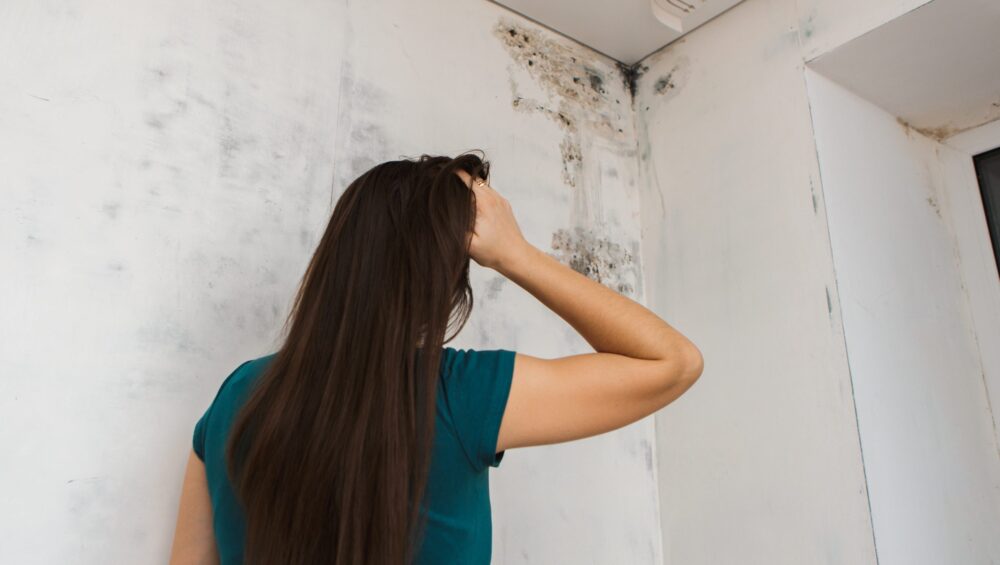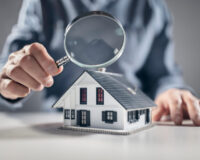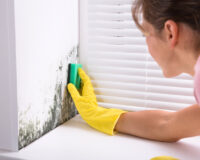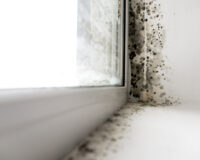Alright, let’s tackle one of the things we get THE MOST questions about: mold. Homeowners are worried they’ve got it, they’re worried it’s dangerous, and they’re worried it’s going to cost them the sale.
Mold is one of those things that sounds really scary – and it can be, in extreme cases – but is also a normal part of owning a home and in almost all cases isn’t anything to be scared of.
Before we get into it, a quick disclaimer: this blog is for informational purposes, not diagnostic purposes. In other words, I can’t tell you virtually through the ghostly veil of writing this blog post whether or not what you’re looking at in your home is 100% mold or not. What I can tell you is some basic pointers and when you might want to get a professional involved.
First off: what IS mold?
I’m not a biologist, so I can’t pontificate on the existence of mold or offer insights into what it’s like to be the mold. But I can tell you that mold is a type of fungi that can grow inside your house. It’s also a freeloader that won’t pay any rent.
Key thing to understand: not all mold is toxic. In fact, MOST mold inside your home isn’t toxic.
Now, that doesn’t mean that you necessarily want it sticking around. But I do tell folks not to panic if they suspect their house has mold.
What does mold do?
Like I said, I’m not a biologist so I can’t tell you the function that mold actually serves in our grand ecosystem. But I can tell you what it does inside your house.
Most of the time, it just looks ugly. Some of the time it can cause some health issues – usually these are runny noses, itchy eyes, and other allergic reactions. The big issue with mold is that once it’s found a nice spot to plant it’s moldy little behind, it’s going to grow bigger and bigger.
Signs of Mold
Mold loves damp, dark places. That means you’ll usually find it in one of these places:
- Near or in sinks, bathtubs, and showers
- Under or near leaky pipes (even inside walls)
- Around windows
- In basements, crawl spaces, or attics
- Under carpets where there’s been a leak or flood
Usually, homeowners suspect they have mold because they’ll notice a dark spot on their walls or floor. Now, a dark spot could mean a lot of things. It could be mold…or it could be natural variation in wood…or it could be a water stain…or it could be…
Point is, look for at least a few of these signs together when you’re trying to figure out if something is mold:
- A splotchy, cottony or powdery discoloration
- A musty, earthy smell
- A nearby source of moisture
- Warping or peeling of the material underneath
- Every time you check on it, it seems to have grown larger
When to get a mold test and call in a mold inspector
This is where I’m gonna go back to my disclaimer earlier: I can’t diagnose a problem virtually. So take all of the following as general advice and as always if in doubt: call in a professional.
MOST mold you find in MOST homes is going to be able to be safely removed by the homeowner, with some hard scrubbing and protective gear.
However, if folks are nervous I tell them to look for these warning signs:
- The area is large. If you’ve got a LOT of mold, that could be a problem to get rid of. It’s probably a good idea at that point to request a test to confirm if it’s mold and make a plan to get someone out there to help get rid of it if it is
- If you’re high-risk for mold spores. If you’ve got asthma, severe allergies, or any other breathing problems it’s not worth the risk. For those folks, breathing in spores can cause a major coughing fit. Have someone else do the dirty work.
- If the smell is overwhelming. Don’t discount the power of your sniffer. If the mold smell is really strong, I would tell you to get it tested before doing anything else.
What to do about mold
If you’ve had an inspector out to verify that your suspicious spot is indeed mold, there are a few things to do.
First, you can try good old-fashioned chemical warfare: suit up with a mask, gloves, and protective eyewear and drop some bleach on it. If it IS mold, it probably will lighten or appear to disappear. This will help confirm that it is indeed, mold.
RMR-86 is a product that we recommend for helping remove SMALL spots of mold or discolored areas. that can treat discolored areas. Not all instances or people need a full blown service to deal with their “mold” or “mildew” issues or concerns.
If it’s a small area, you can attack it with that cleaning solutin. Remember: keep those gloves, goggles, and masks on and open all the windows! You don’t want to breathe in a bunch of flying mold spores, but also if you’re using commercial mold remover most of them contain bleach.
If the area is large or you’re just really not sure, we always recommend erring on the side of caution. It’s always good to talk to a neutral person with experience and some basic knowledge on this topic and if needed, has the proper testing tools and or connections to a test lab that can process your sample and get you some tangible info as to what you’re looking at.
We can do mold inspection as part of a home inspection. If we determine it is mold, our inspectors can point you in the direction of a cleaning business or mold removal business that will safely get rid of the mold for you. And if it’s not mold, then you have a record that you got the area tested.
Mold can be scary, but it doesn’t have to be scary. Be smart about it, and keep an eye out for these warning signs.
And if you’re ever in doubt…it doesn’t hurt to call in a professional.
I’m just sayin’
Need your home inspected? Our full home inspections are as low as $300.
Brian Dodds is licensed home inspector & owner of Titan Inspection Services with over 20 years’ experience in construction trade building and house renovation. Titan Inspection services is based in Washington state and serves Seattle, Olympia, North Bend, Kitsnap County and everything in between.
Every house has a story. What’s your home’s story?






